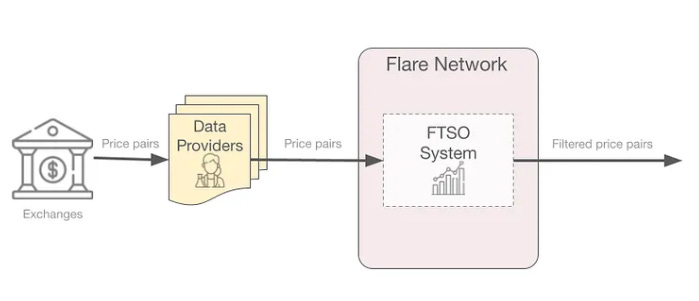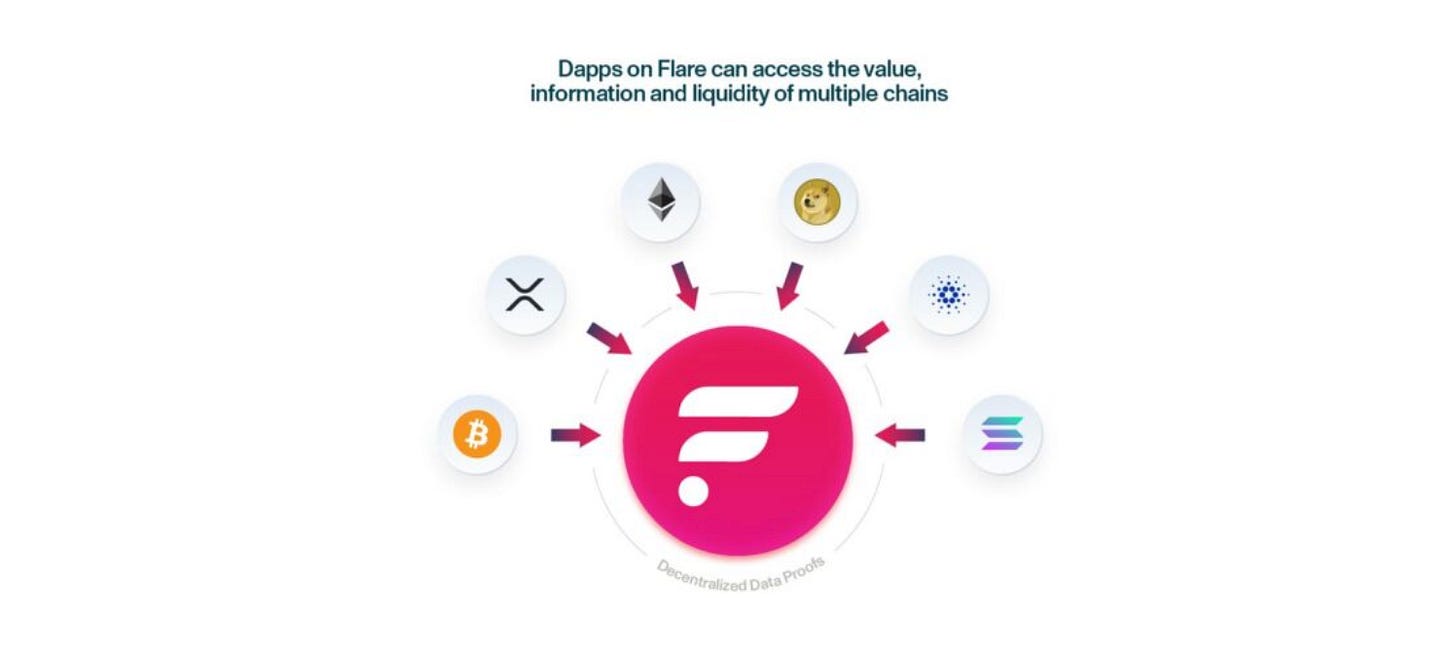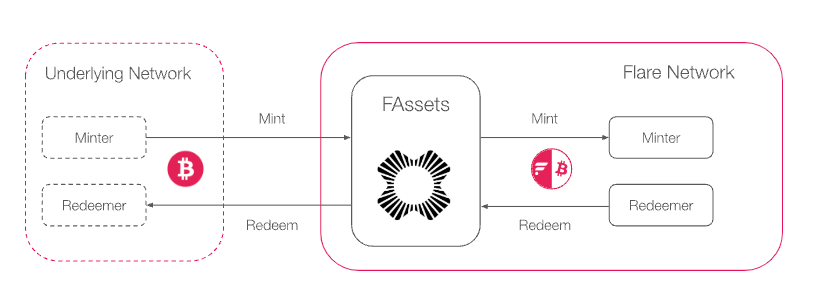Flare Network: Monetization of Outside Liquidity
Intro into the Flare Network, a new topic for me! I will continue to research this chain.
I have begun research here rather recently as a few of my contacts have instructed me to take a look. Flare’s ecosystem is apparent, lively, and I plan to expand my thoughts in future posts. Please follow along as there will be more to come. I always attempt to focus on investment value but this is purely an introduction. Enjoy!
Flare Network is a full-stack layer 1 solution designed for data intensive use cases. It’s mission is to be a blockchain that provides developers secure access to data from other chains and the internet, enabling monetization models through data acquisition and smart contract platform. Flare uses a variety of methods to support this mission and this piece will highlight three of them: Flare Time Series Oracle, Flare State Connector, and FAssets.
The use of oracle contract enhances price feeding for dApps from trusted providers. Flare Time Series Oracle (FTSO) has around 100 decentralized providers of data, fetching data from exchanges, and receiving rewards. The process of spitting out a single price estimate briefly includes: a short interval in which providers must submit a hashed version of data (verification of any plagiarized numbers) and a weighted medium calculation of the data (based on providers’ voting power). Submissions close to the medium are rewarded.
The FTSO contracts to enable this process are split into four parts. PriceSubmitter contract where data providers submit price estimates. FtsoManager contract which manages and coordinates the estimated prices for distribution. FtsoRegistry contract which stores and finalizes prices. And VoterWhitelister which enables a verification of whitelisting for data providers.
It is important for Flare to verify transactions from other blockchains to enable interoperability. This allows easy movement of liquidity from outside blockchains onto Flare to enable use of it’s resources.
Transfers from other blockchains Flare is interoperable with require verification. Flare’s network solution to decentralization and security for validating external data is the Flare State Connector. This is operated using a consensus mechanism through independent entities called Attestation Providers. Flare State Connector enables smart contracts on Flare to access and verify where a specific transaction occurred between other blockchains. These are immutable, historical facts. Consensus is reached through: Collection of data, selection of an answer, partial submission (verification of plagiarism), and reveal of full answer. Consensus requires an agreed majority among the attestation providers. Using the "Byzantine fault Tolerance,” the system allows up to 33% of providers being faulty or dishonest.
FAssets are how Flare grows using outside liquidity. It is a bridge to bring smart contract functionality to non-smart contract tokens such as BTC, XRP, DOGE. These outside blockchains use of Flare enable putting their assets to work, and Flare network is able to grow. As more outside liquidity arrives, more FAssets are minted and become wrapped versions of the underlying asset. To mint an FAsset, a user selects specific agents to provide collateral. Flare is gearing up for V2, enhancing these capabilities, more to come.




